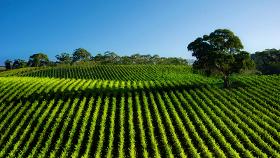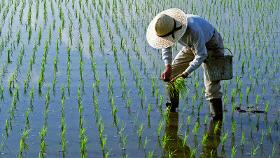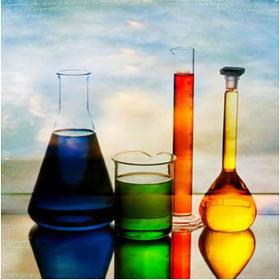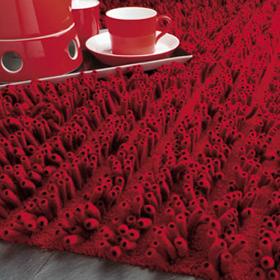- europages
- >
- COMPANIES - SUPPLIERS - SERVICE PROVIDERS
- >
- organic compounds
Results for
Organic compounds - Import export

FKL FERTILIZERS
Belgium
This is a series of organic compound fertilizers used as base fertilizer for a range of different crops. In addition to providing primary nutrients such as nitrogen, phosphorus and potassium, they contain a high percentage of organic material and some very important trace elements such as Fe, Mn, B, Mo, Zn and Cu.
Request for a quote
FKL FERTILIZERS
Belgium
This is a series of organic compound fertilizers used as base fertilizer for a range of different crops. In addition to providing primary nutrients such as nitrogen, phosphorus and potassium, they contain a high percentage of organic material and some very important trace elements such as Fe, Mn, B, Mo, Zn and Cu.
Request for a quote
STOOPEN & MEEÛS
Belgium
candy, spices, herbs, ... FOODCOLOURS A dye is a substance that needs a certain affinity with the carrier on which it is being applied. Hence a bond is created and the colouring capacity emerges. Contrary to a pigment, a dye is a dissolvable colorant and the colouring capacity will only show when dissolved. Dyes always have an organic compound. For more than 5000 years, natural resources have been the base for dyes. Leafs, roots and berries are just some of the components. Nowadays, most of these components have been replaced by synthetic variants. Of course, special dyes are applied when considering nutrition. (E100-199) Some dyes can be transformed in pigments by applying iron salt in a solution. This will cause the formation of the pigment. However, pigments won in this way are often little UV-resistant. What are dyes? There exists a great number of dyes for a great number of applications. Dyes are usually categorised based on their properties. (e.g.
Request for a quote
STOOPEN & MEEÛS
Belgium
petroleumbased products, candles, ... SOLVENT DYES A dye is a substance that needs a certain affinity with the carrier on which it is being applied. Hence a bond is created and the colouring capacity emerges. Contrary to a pigment, a dye is a dissolvable colorant and the colouring capacity will only show when dissolved. Dyes always have an organic compound. For more than 5000 years, natural resources have been the base for dyes. Leafs, roots and berries are just some of the components. Nowadays, most of these components have been replaced by synthetic variants. Of course, special dyes are applied when considering nutrition. (E100-199) Some dyes can be transformed in pigments by applying iron salt in a solution. This will cause the formation of the pigment. However, pigments won in this way are often little UV-resistant. What are dyes? There exists a great number of dyes for a great number of applications. Dyes are usually categorised based on their properties. (e.g.
Request for a quote
STOOPEN & MEEÛS
Belgium
staining, polishing, varnishing,... NATURAL OXIDES: yellow, red, brown, black STAIN, COLOURED STAIN SYNTHETIC IRON OXIDES: yellow, red, brown, black CHROME OXIDE GREEN COBALT OXIDE: green, blue ULTRAMARINE: blue, violet CARBON- or PITCH-BLACK TITANIUMDIOXIDE WHITE LEAD CHROMATE : yellow, orange WATER-SOLUBLE DYES: acid and basic A dye is a substance that needs a certain affinity with the carrier on which it is being applied. Hence a bond is created and the colouring capacity emerges. Contrary to a pigment, a dye is a dissolvable colorant and the colouring capacity will only show when dissolved. Dyes always have an organic compound. For more than 5000 years, natural resources have been the base for dyes. Leafs, roots and berries are just some of the components. Nowadays, most of these components have been replaced by synthetic variants. Of course, special dyes are applied when considering nutrition.
Request for a quoteDo you sell or make similar products?
Sign up to europages and have your products listed

STOOPEN & MEEÛS
Belgium
detergents, ... WATER-SOLUBLE DYES A dye is a substance that needs a certain affinity with the carrier on which it is being applied. Hence a bond is created and the colouring capacity emerges. Contrary to a pigment, a dye is a dissolvable colorant and the colouring capacity will only show when dissolved. Dyes always have an organic compound. For more than 5000 years, natural resources have been the base for dyes. Leafs, roots and berries are just some of the components. Nowadays, most of these components have been replaced by synthetic variants. Of course, special dyes are applied when considering nutrition. (E100-199) Some dyes can be transformed in pigments by applying iron salt in a solution. This will cause the formation of the pigment. However, pigments won in this way are often little UV-resistant. What are dyes? There exists a great number of dyes for a great number of applications. Dyes are usually categorised based on their properties. (e.g.
Request for a quote
STOOPEN & MEEÛS
Belgium
wool, coton, leather, raffia, nylon, ... DIVERS DYES A dye is a substance that needs a certain affinity with the carrier on which it is being applied. Hence a bond is created and the colouring capacity emerges. Contrary to a pigment, a dye is a dissolvable colorant and the colouring capacity will only show when dissolved. Dyes always have an organic compound. For more than 5000 years, natural resources have been the base for dyes. Leafs, roots and berries are just some of the components. Nowadays, most of these components have been replaced by synthetic variants. Of course, special dyes are applied when considering nutrition. (E100-199) Some dyes can be transformed in pigments by applying iron salt in a solution. This will cause the formation of the pigment. However, pigments won in this way are often little UV-resistant. What are dyes? There exists a great number of dyes for a great number of applications. Dyes are usually categorised based on their properties. (e.g.
Request for a quote
KURARAY (EVAL EUROPE N.V.)
Belgium
Barrier geosynthetic liners, or geomembranes, provide a protective layer in landfill, agricultural and industrial sites. The goal is to keep chemicals such as VOCs (volatile organic compounds) and greenhouse gases from diffusing out of stored materials and contaminate the surrounding environment. Adding EVALâ„¢ barrier performance to existing geomembrane designs greatly improves the performance of geomembranes to better protect soil, water and air quality. A cost-effective alternative to expensive remediation of contaminated sites. + Protecting the environment + EVAL barrier against VOCs + EVAL barrier against hydrocarbon VOCs + EVAL barrier against greenhouse gases

AAVOS INTERNATIONAL
Belgium
Proven reliable FTIR technology yields real-time analysis of both organic and inorganic compounds. Measures ambient toxic and pollutant gases with ppb to % level detection. A variety of user configurable alarms for instant warnings of toxic gas levels and system control. Capable of monitoring 28 components with up to 32 sampling points over a distance of 300 meters from the analyzer. Rapid response time – typically 20-200 seconds per stream. Configurable sample point selection control locally or by DCS. SpectraRTS™ operating software engineered exclusively for environmental monitoring – appropriate for development chemists, engineers and maintenance personnel.
Request for a quoteResults for
Organic compounds - Import exportNumber of results
10 ProductsCountries